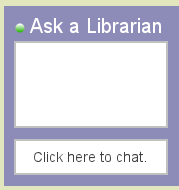Information Update - Fall 1998
Archivist Attends Rare Book School
- This past summer I attended Rare Book School at the University of Virginia in Charlottesville for the second time. Rare Book School was founded in 1983 by Terry Belanger at Columbia University as an adjunct to the library science program. Belanger received an offer from the University of Virginia in Charlottesville to support the school in 1992 after Columbia University terminated the library school. Rare Book School takes place over the course of four weeks; during July and early August and offers more than forty classes.
- Class content varies dramatically. There are a few classes dealing with medieval books, and there are courses on computer technology as well as the administrative aspects of Special Collections management. Many classes explore a historical period, however, like Lithography in the Age of the Hand, Press or Japanese Printmaking 1613-1868. Classes meet for a week from 8:30 AM to 3 PM, Monday through Friday, making the course about the equivalent of a full semester class, minus exams.
- The first time I attended, I took Introduction to Descriptive Bibliography, which is the fundamental course for rare book studies. In descriptive bibliography we learned basic techniques for analyzing and describing the physical make-up of a book, particularly printed hooks made during the hands press era, up to 1800. We specifically learned how to determine the format of a book (how often the original sheet of paper was folded and how many pages were printed per sheet) and how to determine the book's collation formula (how the folded sheets were combined to create the book). We also learned how to look for variations in the texts. These techniques help to document the printing history of a book, which is useful in determining first editions and ideal state of a book.
- This year I took introduction to technology in order to better document the medieval books owned by The University. Codicology is the study of medieval books. In this class we learned basic methodology for analyzing and describing hooks created and written by hand before the printing press was invented. It is rare for a medieval book to mention the date it was written or the city or monastery where it was created. By comparing the number of pages sewn together in a gathering, the types of decoration employed, how the page layout was designed, and what style of writing was used, the book historian can localize a medieval book to a geographic area and to a 25 to 50 year time frame.
- Besides the wide variety of classes to choose from, we also have interesting housing options. Students taking advantage of university housing have the option of staying in modern dormitories with air conditioning, or of staying on The Lawn. The Lawn is the original student housing designed by Thomas Jefferson. Two ranges of rooms parallel the Lawn which is terminated by the original Library named the Rotunda. The rooms are simple and have been modernized with electricity and a sink. They are furnished with a bed, a desk, a chair, a fan and a rocking chair. It is a UVA, and a RBS, tradition to drag your rocking chair out onto the Lawn and read or chat with your neighbor. Although the weather can be very sultry in Charlottesville in midsummer, the rooms were designed to maximize 'airflow, and the fans are very effective.
- Rare Book School is an intense but rewarding experience where one receives a thorough introduction to an aspect of rare book methodology, meets colleagues, and participates in, what one student termed, "summer camp for book geeks."
Michael Knies

